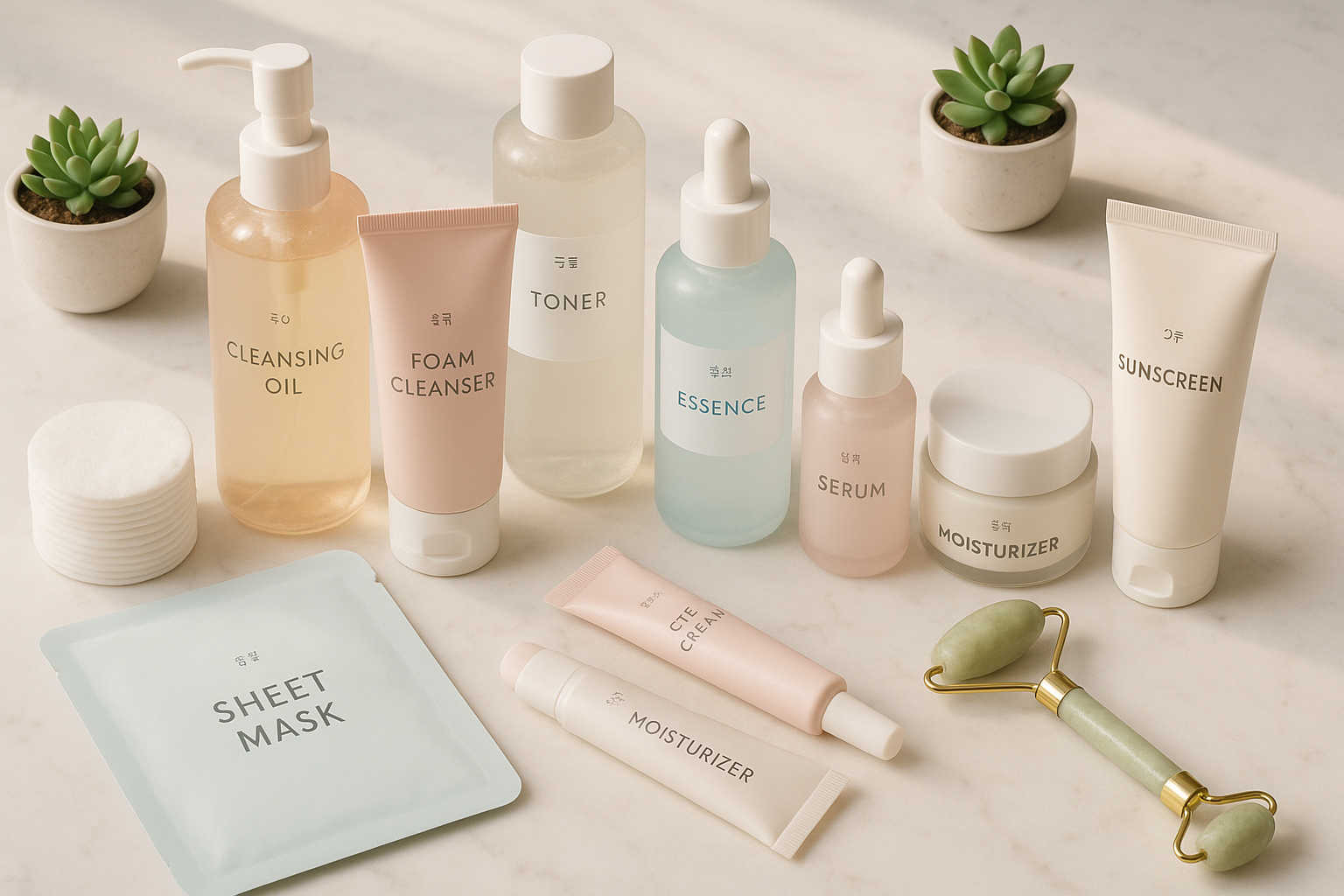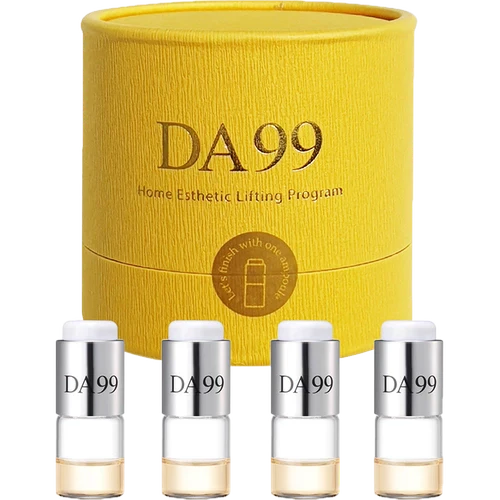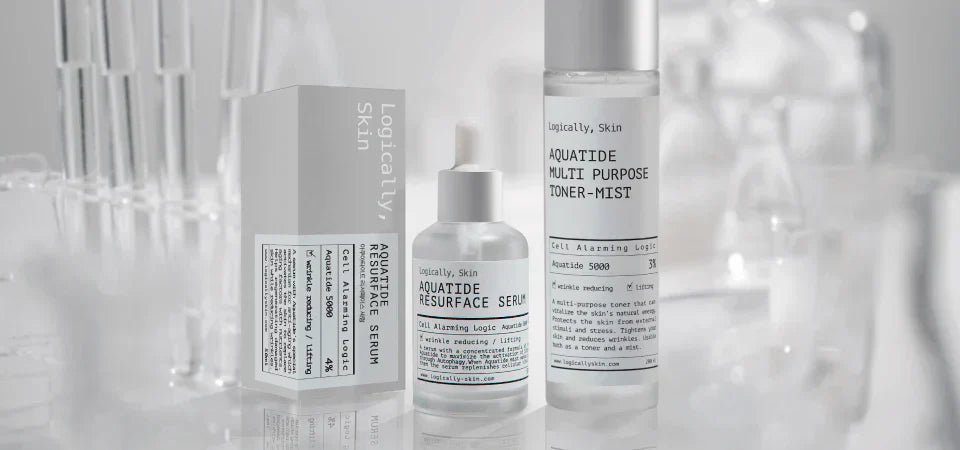En los últimos años, el cuidado de la piel coreano se ha convertido en un fenómeno global. Con su popularidad, han surgido muchos mitos: desde “10 pasos o nada” hasta “solo para piel joven”. Este artículo explora los malentendidos más comunes y los pone bajo la lupa para que puedas tomar decisiones con confianza. Analizaremos qué es cierto, qué es puro marketing y cómo adaptar la filosofía coreana a tus propias necesidades.
Mito #1: “El cuidado coreano de la piel es solo para gente joven”
La verdad: La K-beauty se centra en las necesidades de la piel, no en la edad. Muchas fórmulas coreanas incluyen hidratantes (ácido hialurónico), ingredientes fortalecedores de la barrera (ceramidas, escualano) y activos antienvejecimiento (retinoides, péptidos). Funcionan para personas de 20, 30, 40 años y más, siempre que se elijan según la concentración y la textura adecuadas.
Consejo experto: Elige productos en función de tus preocupaciones cutáneas (sequedad, pigmentación, textura desigual) y no de tu edad. Introduce los activos gradualmente y observa la tolerancia de tu piel.
Mito #2: “Más pasos = mejores resultados”
La verdad: Las rutinas de varios pasos son una herramienta, no una regla. Más productos no significan necesariamente mejores resultados: demasiadas capas pueden causar irritación y obstruir los poros. La fuerza del cuidado coreano radica en la personalización: la piel grasa puede necesitar solo 3–4 pasos, mientras que la piel seca o deshidratada puede beneficiarse de más capas ligeras.
Consejo experto: Empieza con lo básico: limpiar → hidratar → proteger (SPF por la mañana) → reparar (por la noche). Añade más pasos solo si tienes objetivos específicos, como tratar la pigmentación o mejorar la textura.
Mito #3: “Lo natural siempre es mejor”
La verdad: “Natural” no significa automáticamente más suave o más eficaz. Las fórmulas coreanas suelen combinar extractos botánicos (té verde, centella, fermento de arroz) con activos dermatológicos modernos (niacinamida, péptidos, retinoides) para lograr un equilibrio óptimo. Algunos ingredientes naturales pueden irritar (componentes de fragancias, aceites esenciales), mientras que ciertos sintéticos son muy respetuosos con la piel.
Consejo experto: Observa la lista INCI, las concentraciones y la lógica clínica, no solo las etiquetas “natural” o “clean”. Prueba los productos en piel limpia y añádelos uno por uno.
Mito #4: “El cuidado coreano es igual para todos los tipos de piel”
La verdad: La K-beauty es diversa: desde esencias acuosas hasta bálsamos, desde ácidos hasta ampollas calmantes. Un producto puede ser perfecto para un tipo de piel y no adecuado para otro.
- Piel grasa/con tendencia acneica: geles y fluidos ligeros, exfoliación suave (por ejemplo, ácido salicílico), emolientes no comedogénicos.
- Piel seca/deshidratada: hidratación por capas (esencia + sérum + crema), ceramidas, escualano.
- Piel sensible/reactiva: fórmulas minimalistas, centella asiática, pantenol; bajas concentraciones de activos.
- Piel mixta: enfoque localizado – texturas ligeras en la zona T, más ricas en la zona U.
Consejo experto: Ajusta las texturas según la estación. Una crema más rica en invierno, una tipo gel en verano: esta lógica estacional es esencial en el cuidado coreano.
Mito #5: “Verás resultados en solo unos días”
La verdad: La piel funciona en ciclos biológicos. Las mejoras en el tono y la textura suelen tardar entre 4 y 8 semanas; la pigmentación puede requerir más tiempo. El éxito del cuidado coreano reside en la constancia y la eficacia acumulada, no en los milagros instantáneos.
Consejo experto: Toma fotos de progreso con luz natural cada 2–3 semanas. Te ayudará a ver los cambios reales que el espejo podría pasar por alto.
Mito #6: “El cuidado coreano solo mantiene, no trata”
La verdad: Muchas fórmulas coreanas abordan preocupaciones específicas: control del sebo, pigmentación, textura desigual. La ventaja es el enfoque en capas de baja irritación y las combinaciones inteligentes de activos. Para condiciones persistentes (como acné severo o melasma), el dermatólogo es esencial, pero la K-beauty apoya el mantenimiento a largo plazo.
Mito #7: “La exfoliación es esencial todos los días”
La verdad: La exfoliación es una herramienta, no una regla diaria. El uso excesivo de AHA/BHA/PHA puede debilitar la barrera cutánea y aumentar la sensibilidad. Muchos productos coreanos confían en la microdosificación y el refuerzo de la barrera (ceramidas, beta-glucano) para obtener progresos sostenibles.
Consejo experto: Empieza con 1–2 veces por semana. Para pieles sensibles, incluso menos, con foco en reparar la barrera.
Mito #8: “El SPF es solo para el verano”
La verdad: Los rayos UVA están presentes todo el año e incluso penetran las ventanas. En el cuidado coreano, el protector solar es el paso final de la mañana porque hace que todos los pasos anteriores valgan la pena: previene el fotoenvejecimiento y protege los resultados obtenidos.
Consejo experto: Elige fórmulas que disfrutes aplicando generosamente. La comodidad y la textura garantizan la constancia.
Cómo pensar “a la manera coreana” – Un marco práctico
- Observa tu piel, no las tendencias. Elige productos según tus necesidades, no por el hype.
- Las capas tienen una función. Agua → activos → sellado → protección. Omite lo que no necesites.
- Bajo riesgo, alta constancia. Los pequeños pasos constantes superan las intervenciones agresivas ocasionales.
- Adáptate al entorno. Ajusta las texturas al clima, la humedad y tu estilo de vida.
- Prueba con inteligencia. Introduce productos uno a uno y detente ante los primeros signos de irritación.
Conclusión
Los mitos sobre el cuidado coreano de la piel suelen surgir de los extremos: o “demasiados pasos” o “milagros instantáneos”. La verdad es más simple: personalización, constancia y respeto por la barrera cutánea. Cuando tratas tu rutina como un ritual personal, los resultados son más duraderos y el proceso más placentero. Las decisiones informadas son el filtro más hermoso que puedes regalarle a tu piel.





